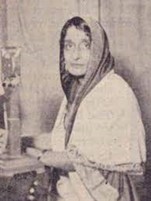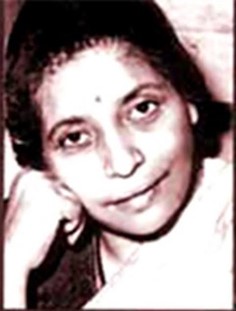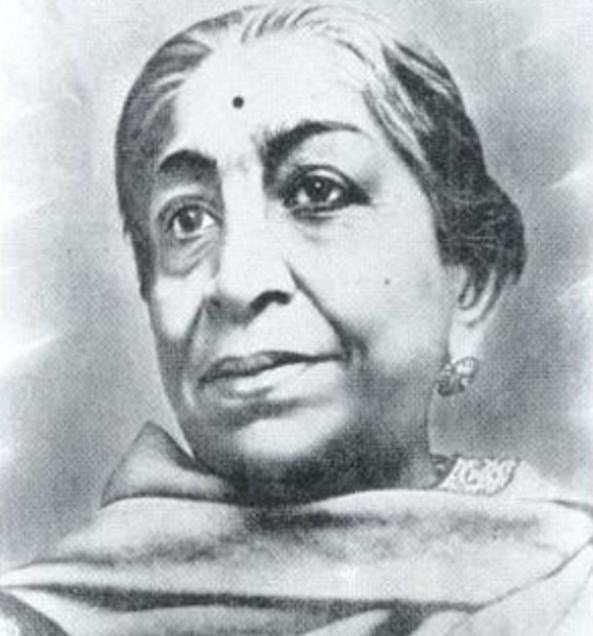PREVIOUS
Women Leaders in Constituent Assembly of India – PART IV
June 3 , 2023
693 days
2650
0
(இதன் தமிழ் வடிவத்திற்கு இங்கே சொடுக்கவும்)
10. Rajkumari Amrit Kaur
- Rajkumari Dame Amrit Kaur was an Indian activist and politician.
- Amrit Kaur was born on 2 February 1887 in Badshah Bagh, Lucknow University Campus, Lucknow, Uttar Pradesh (then North-Western Provinces), India.
- Kaur was born to Raja Sir Harnam Singh Ahluwalia the younger son of the Raja Randhir Singh of Kapurthala.
- Kaur had her early education in Sherborne School for Girls in Dorset, England, and had her college education at Oxford University.
- After completing her education in England, she returned to India in 1918.
- After her return to India from England, Kaur became interested in the Indian independence movement.
- Her father had shared close association with Indian National Congress leaders including Gopal Krishna Gokhale, who often visited them.
- Kaur was drawn to the thoughts and vision of Mahatma Gandhi, whom she met in Bombay (Mumbai) in 1919.
- Kaur worked as Gandhi's secretary for 16 years.
- Following the Jallianwala Bagh massacre later that year, when the British forces shot and killed over 400 peaceful protestors in Amritsar, Punjab, Kaur became a strong critic of the British rule in India.
- She formally joined the Congress and began active participation in India's independence movement while also focusing on bringing about social reform.
- Kaur co-founded the All-India Women's Conference in 1927.
- She was later appointed its secretary in 1930, and president in 1933.
- She was imprisoned by the British authorities for her participation in the Dandi March, led by Mahatma Gandhi in 1930.
- Kaur went to live at Gandhi's ashram in 1934.
- The British authorities appointed her as a member of the Advisory Board of Education, but she resigned from the position following her involvement with the Quit India Movement in 1942.
- She was imprisoned by the authorities for her actions during the time.
- Kaur served as the Chairperson of the All-India Women's Education Fund Association.
- She was a member of the Executive Committee of Lady Irwin College in New Delhi.
- She was sent as a member of the Indian delegation to UNESCO conferences in London and Paris in 1945 and 1946, respectively.
- She also served as a member of the Board of Trustees of the All-India Spinners’ Association.
- Kaur was elected from the United Provinces to the Constituent Assembly of India.
- She was also a member of Sub-Committee on Fundamental Rights and Sub-Committee on Minorities.
- After India's independence, Amrit Kaur became part of Jawaharlal Nehru's first Cabinet.
- She was appointed the first Health Minister of India in 1947 and remained in office until 1957.
- In 1950, she was elected the president of World Health Assembly.
- As Health Minister, Kaur led a major campaign to fight the spread of malaria in India.
- She also led the campaign to eradicate tuberculosis and was the driving force behind the largest B.C.G vaccination programme in the world.
- In 1950, she was elected President of the World Health Assembly, becoming the first woman to hold that position.
- Kaur played an instrumental role in establishment of the All-India Institute of Medical Sciences (AIIMS) in New Delhi and became its first president.
- Kaur served as the Chairperson of the Indian Red Cross society for fourteen years.
- She served on the boards of governmental bodies aimed at fighting tuberculosis and leprosy.
- She started the Amrit Kaur College of Nursing and the National Sports Club of India.
- From 1957 until her death in 1964, she remained a member of Rajya Sabha.
- Between 1958 and 1963 Kaur was the president of the All-India Motor Transport Congress in Delhi.
- Until her death, she continued to hold the presidencies of the All-India Institute of Medical Sciences, the Tuberculosis Association of India, and the St. John's Ambulance Corps.
- She also was awarded the Rene Sand Memorial Award.
- Kaur died in New Delhi on 6 February 1964.
- Today, her private papers are part of the Archives at the Nehru Memorial Museum & Library, at Teen Murti House, Delhi.

11. Renuka Ray
- Renuka Ray was a noted freedom-fighter, social activist, and politician of India.
- She was born on 1904.
- She was a descendant of Brahmo reformer, Nibaran Chandra Mukherjee, and daughter of Satish Chandra Mukherjee, an ICS officer, and Charulata Mukherjee, a social worker and member of the All-India Women’s Conference.
- She met Mahatma Gandhi at an early age of sixteen and was greatly influenced by him.
- She left college to answer Gandhiji's call for boycotting the British Indian educational system.
- However, later when her parents persuaded Gandhiji to ask her to go to London for further studies, she joined London School of Economics in 1921.
- She was married to Satyendra Nath Ray at an early age.
- On returning to India, she joined All India Women’s Conference
- She worked hard to champion women's rights and inheritance rights in parental property.
- In 1932, she became President of All India Women’s Conference.
- She was also its President for the years 1953-54.
- In 1943, she was nominated to Central Legislative Assembly as a representative of women of India.
- She was also a member of Constituent Assembly of India in 1946-47.
- She was appointed as Minister of Relief & Rehabilitation, West Bengal in the years 1952-57.
- She was also Lok Sabha member for the years 1957-1967 from Malda Lok Sabha constituency.
- In year 1959, she headed a committee on Social Welfare and Welfare of Backward Classes, which is popularly known as Renuka Ray Committee.
- She is author of the book My Reminiscences: Social Development During the Gandhian Era and After.
- She was awarded the Padma Bhushan by the Government of India in 1988.
- Renuka Ray died in 1997.

12. Sarojini Naidu
- Sarojini Naidu was an Indian political activist and poet.
- Sarojini Naidu was born on 13 February 1879 as the eldest daughter of a Bengali Gulin Brahmin family in Hyderabad state.
- His father was Akoranath Chattopadhyay who was a scientist, philosopher, and educator.
- Her father was the principal of Nizam College.
- Her father held a Doctor of Science from Edinburgh University.
- She was the eldest of the eight siblings.
- From 1895 to 1898 she studied in England, at King's College, London and then Girton College, Cambridge, with a scholarship from the Nizam of Hyderabad.
- While staying in England, at the age of 17 she met a non-Brahmin professional doctor named Mutyala Govindarajulu Naidu, fell in love with him and married him at the age of 19.
- They were legally married in Chennai in 1898.
- They had five children namely Jayasurya, Padmaja, Randhir, Leelamani and Padmaja.
- Later his daughter Padmaja became the Governor of West Bengal.
- Following the partition of Bengal in 1905, She participated in the Indian independence struggle.
- During 1903-17 Sarojini got to know Gopal Krishna Gokhale, Rabindranath Tagore, Muhammad Ali Jinnah, Annie Besant, CP Ramaswamy Iyer, Mohandas Gandhi, and Jawaharlal Nehru.
- After 1917 she joined Gandhi's satyagraha movement of nonviolent resistance against British rule.
- Naidu went to London in 1919 as a part of the All-India Home Rule League she continued her efforts to advocate for freedom from the British rule.
- The next year, she participated in the non-cooperation movement in India.
- In 1924, Naidu represented the Indian National Congress at the East African Indian National Congress.
- In 1925 Naidu was the first Indian female president of the Indian National Congress.
- In 1927 Naidu was a founding member of the All-India Women's Conference.
- In 1928 she travelled in the United States to promote nonviolent resistance.
- Naidu also presided over East African and Indian Congress' 1929 session in South Africa.
- The British jailed Naidu again in 1942 for her participation in the Quit India Movement.
- She was imprisoned for 21 months.
- She participated in Gandhi's Salt Satyagraha campaign in 1930.
- Along with her many women activists including Kamaladevi Chattopadhyay and Khurshet Naoroji participated in the salt satyagraha campaign.
- When Gandhi was arrested on 6 April 1930, Naidu was appointed as the new leader of the campaign.
- Following India's independence from the British rule in 1947, Naidu was appointed the governor of the United Provinces (present-day Uttar Pradesh), making her India's first woman governor.
- Naidu began writing at the age of 12.
- Her play, Maher Muneer, written in Persian, impressed the Nizam of Kingdom of Hyderabad.
- Her first book of poems was published in London in 1905, titled "The Golden Threshold".
- Her Nicknames are "Nightingale of India” and "Bharat Kokila".
- She died on 2nd March of 1949.

-------------------------------------
Leave a Reply
Your Comment is awaiting moderation.


